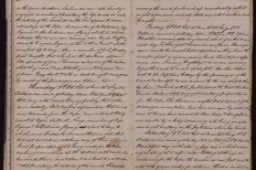THIS STORY STARTS IN
1843
the world’s first great ocean liner
THE WORLD’S FIRST GREAT OCEAN LINER
Brunel’s SS Great Britain is one of the most important historic ships in the world. When she was launched in 1843, she was called ‘the greatest experiment since the creation’.

OPTIONAL IMAGE CAPTION / BRUNEL’S IRON SHIP BEING LAUNCHED
No one had ever designed so vast a ship, nor had the vision to build it of iron. Brunel fitted her with a 1000 hp steam engine, the most powerful yet used at sea. Perhaps most daring of all, Brunel rejected using conventional paddle wheels to drive his ship. Instead, he gave the SS Great Britain a screw propeller. This was the newest invention in maritime technology. By seeing how to combine these key innovations, Brunel created a ship that changed history.
I LOVE EVERY PLANK OF HER. I PAT HER SOMETIMES AND I’VE PROMISED HER A REST IF SHE WILL ONLY GET HOME IN LESS THAN 70 DAYS.
CAPTAIN GRAY, 28 MAY 1866
THE EMIGRANT CLIPPER
In 1852 Gibbs, Bright & Co. purchased the SS Great Britain to use for carrying emigrants to australia.

OPTIONAL IMAGE CAPTION / BRUNEL’S IRON SHIP BEING LAUNCHED
No one had ever designed so vast a ship, nor had the vision to build it of iron. Brunel fitted her with a 1000 hp steam engine, the most powerful yet used at sea. Perhaps most daring of all, Brunel rejected using conventional paddle wheels to drive his ship. Instead, he gave the SS Great Britain a screw propeller. This was the newest invention in maritime technology. By seeing how to combine these key innovations, Brunel created a ship that changed history.
I LOVE EVERY PLANK OF HER. I PAT HER SOMETIMES AND I’VE PROMISED HER A REST IF SHE WILL ONLY GET HOME IN LESS THAN 70 DAYS.
CAPTAIN GRAY, 28 MAY 1866
THE WINDJAMMER
The SS Great Britain was a remarkably adaptable ship. After 30 years as a passenger ship, she was converted to carry cargo

OPTIONAL IMAGE CAPTION / BRUNEL’S IRON SHIP BEING LAUNCHED
No one had ever designed so vast a ship, nor had the vision to build it of iron. Brunel fitted her with a 1000 hp steam engine, the most powerful yet used at sea. Perhaps most daring of all, Brunel rejected using conventional paddle wheels to drive his ship. Instead, he gave the SS Great Britain a screw propeller. This was the newest invention in maritime technology. By seeing how to combine these key innovations, Brunel created a ship that changed history.
I LOVE EVERY PLANK OF HER. I PAT HER SOMETIMES AND I’VE PROMISED HER A REST IF SHE WILL ONLY GET HOME IN LESS THAN 70 DAYS.
CAPTAIN GRAY, 28 MAY 1866







